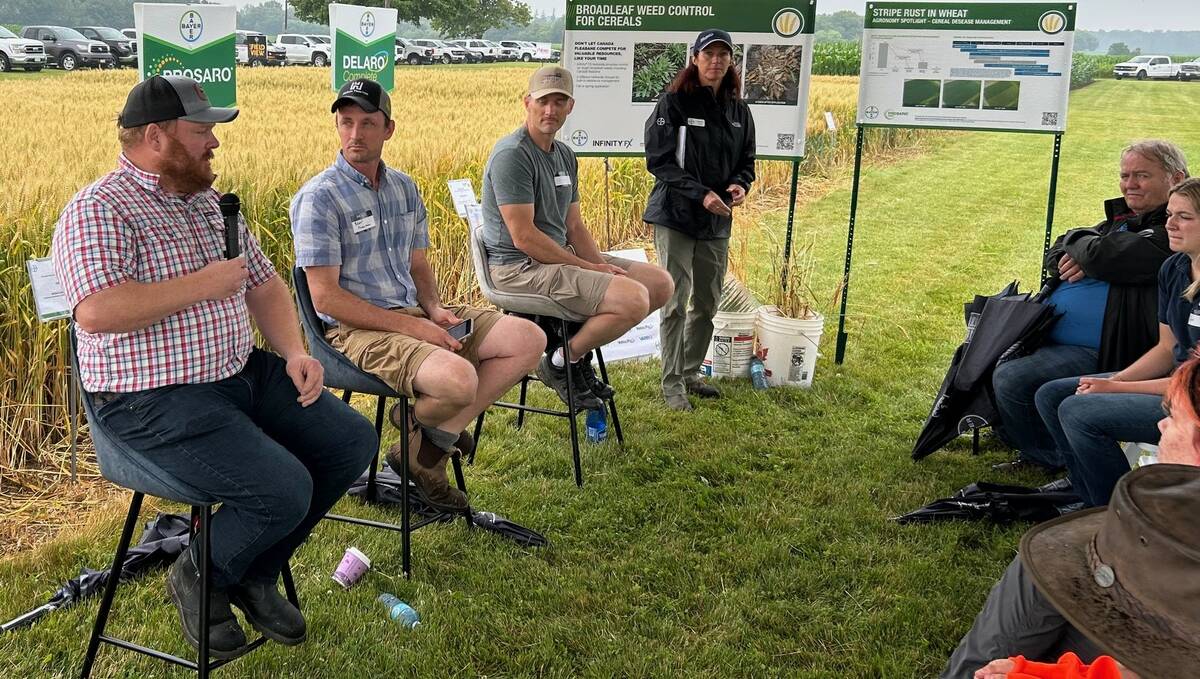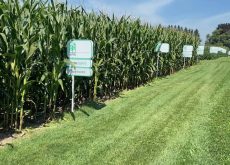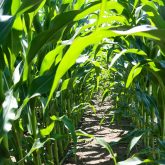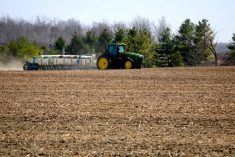Three participants in the Great Lakes Yield Enhancement Network (YEN) shared their experiences during Bayer’s recent research plot tour near Tavistock.
The goal of the Great Lakes YEN is to have participants in Ontario and the Great Lakes region of the United States share information and learn more about specific crop and field characteristics of winter wheat that may lead to management opportunities for closing the yield gap between actual and potential yield. Part of a global network of YENs targeting a range of crops, this one is supported by Grain Farmers of Ontario and among its participants are Jeff Cook of Talbotville, Blair Freeman of Owen Sound and Adam Ireland of Teeswater.
Read Also

Claas brings 1000 Series SP forage harvesters to Canada
In mid-August, Claas unveiled its new line of Jaguar forage harvesters at an event in Visalia, California, deep in the heart of that state’s dairy region.
Why it matters: The YEN offers the chance to connect with growers in Ontario and Michigan to find out strategies for achieving the best possible wheat yield under your farm’s growing conditions.
Ireland noted that his decision to join the YEN didn’t necessarily stem from a desire to achieve top wheat yields in his region. Instead, with a source of manure from his brother’s dairy operation available to some of the fields close to home, he wanted to use the YEN’s insights to focus on fields that don’t have access to manure and hadn’t historically performed well in winter wheat.
In those fields especially, and even on some fields with regular access to manure, Ireland noted that tissue tests taken on wheat regularly reveal low phosphorus. One thing he hopes to learn from his YEN counterparts is how to come up with a better P application strategy depending on the field.
Freeman, meanwhile, said, “the YEN has been a great kick in the pants to get us looking at our wheat crop.” Also a dairy farmer, he said his participation in the network inspired him to begin doing head counts of the crop at harvest. The result has been an enhanced ability to “get seeding rates dialed in” at the beginning of the crop.
Cook, whose farm also includes some processing vegetable acres, said so far his participation in the YEN has led to “little tweaks” rather than big changes. One of those has been applying almost all sulphur early as a dry product. He’s also working with nitrogen application rates and timing with an aim to better manage lodging at harvest.
And he has begun using higher resolution soil samples to get away from making management decisions based solely on a 50-acre or 100-acre field. With soil insight now dividing those fields into numerous sub-plots, changing management within the field can potentially enhance overall yield.
The three panelists agreed, however, that despite the huge growth in the availability of real-time field data in recent years, crop growers should stay connected with hands-on and eyes-on observations.
Freeman said he always makes manual counts during harvest season to confirm the combine’s yield monitor is somewhat accurate. The Owen Sound-area farmer added he can never understand why the yield monitor often gives one result in one pass of the field followed by a significantly different number on the following pass.
Ireland agreed the yield monitor can be erratic from pass to pass. But both he and Freeman said they generally trust the combine’s results when it comes to field-wide wheat yield.
Applications to participate as an Ontario grower in the 2025 Great Lakes YEN closed earlier this year, with a cap of 125 from this province. The program includes a $300 fee for participation and requires farmers to collect soil, tissue, and grain samples at specific times throughout the project. Additionally, participating farmers are expected to keep a record of all crop inputs, track crop growth stages, and enter field data by established deadlines.
For more information, visit https://greatlakesyen.com/about/.













